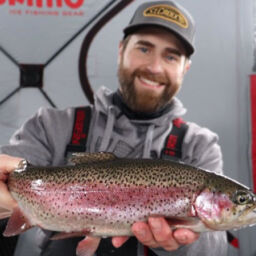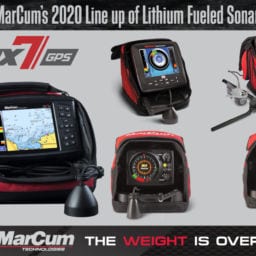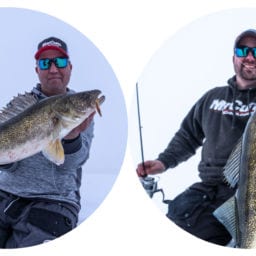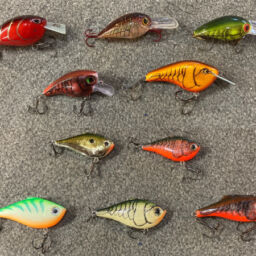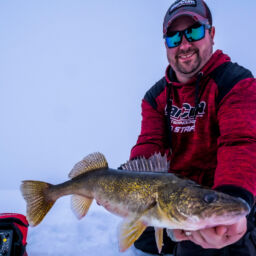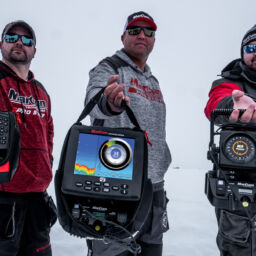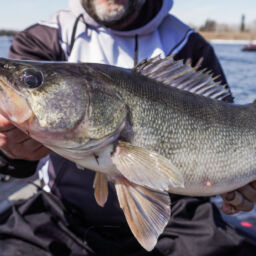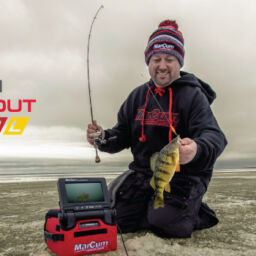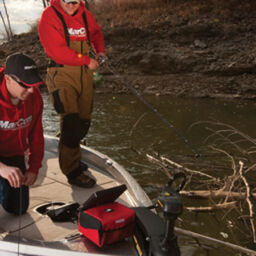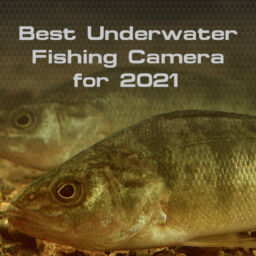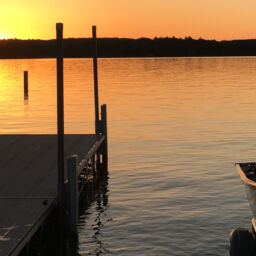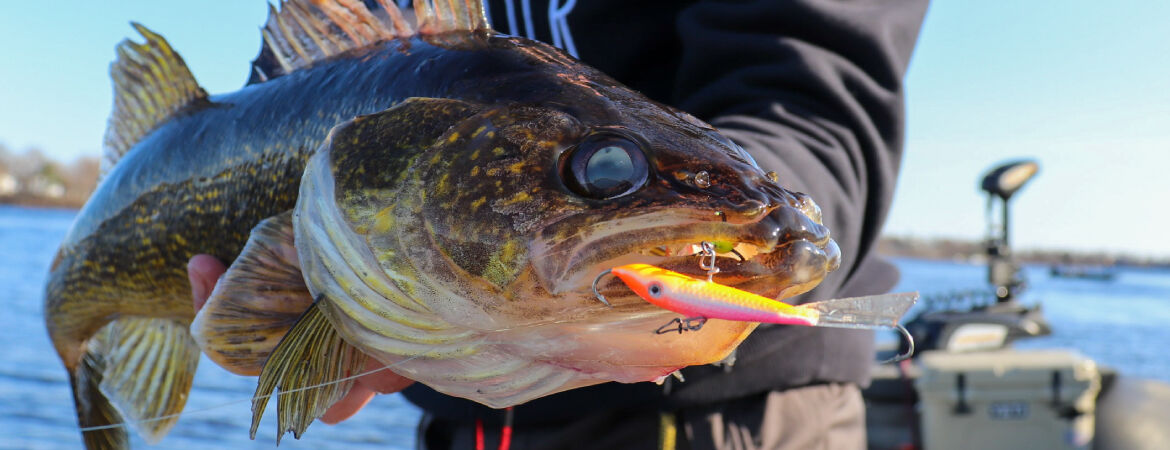
Walleye Warm Water Temperature Transitions
It’s been a great early season thus far. A delayed spring and roller coaster early summer has kept walleyes primarily shallow. Fish have been readily available in shallow developing weeds, traditional rock to sand and gravel transitions, and any good shoreline associated cover that’s been or being buffeted by wind.
Main lake points and even secondary spots along the shore have been good thus far, but most successful anglers have been within a few hundred yards of dry land, no matter how large the lake.
That pattern will continue with resident fish, but begin to be more sporadic, requiring good wind over a length of time to push those fish from the depths into shallow water feeding mode. Yet as one pattern fades, another kicks into high gear, and walleyes in the upper Midwest are already starting their summer movements to deeper off-shore structure.
Water temperatures that build into the high 60 and 70 degree marks will definitely get fish moving, and that usually coincides with a few hatches. Bugs crawling out of the deep mud get rafted against the main-lake structure, and signify some of the initial pushes to offshore humps, bars, and reefs. It’s often when casual walleye anglers, or those who see early mixed bags of walleyes with crappies and gills, stop catching them.
Anglers don’t always follow, sometimes because they’re not required to. This is a dynamic time of year as the summer food chain ramps up production. That means anglers don’t always have to look deep to find fish, and several patterns can be going at the same time.
Shallow weeds and breaklines will hold fish too, but often those fish aren’t as concentrated – or predictable – as the offshore ones. Wind will focus their locations even moreso, as fish concentrate efforts on the side of offshore structure that collects bait.
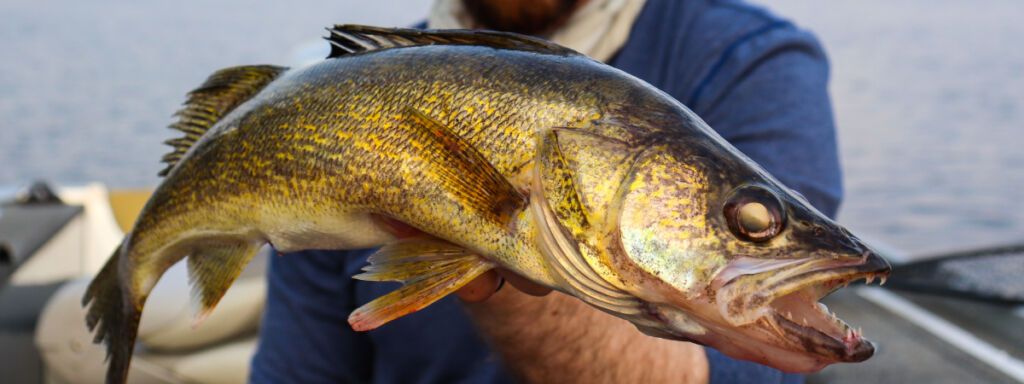
The other advantage to fishing main-lake structure during this time of year is that with electronics, you simply have more observational tools at your disposal. Fish at depths greater than 10-12 feet or so are less likely to spook due to overhead boat traffic.
Even in exceptionally clear systems, you can easily graph fish in 10 feet of water and deeper, especially when there’s a bit of chop on the surface. While side-imaging is a great tool found in modern electronics as well, these fish are often buried in weeds or other cover.
Deep fish cannot hide from traditional 2D sonar, not to mention, you tend to be more certain that what you’re viewing is walleyes if they’re belly-to-bottom sonar targets.
Of course, electronics also means mapping, like the Navionics maps on your MarCum MX-7GPS, which is a key tool for your walleye-finding arsenal. During this time of the year, I’m looking for wind-blown edges of offshore structure that have good access to deep water.
Specifically, I target points and inside-turns that serve as funnels for movement from the depths to the shallows. Especially inside turns are super-highways of fish migration during low-light periods. During cloudy or windy days, these “chutes” hold fish throughout, and allow you to keep the bite going during daylight hours.
Good mapping and quality sonar go hand in hand, as in a perfect world you’d locate ahead of time a number of likely spots on the cartography, then use your sonar to confirm or deny the presence of schools of walleye. Picking a spot, seeing fish on the graph, then catching said fish is an activity that really helps build the necessary confidence to use your electronics well.
Rinse and repeat long enough, and you quickly learn what to be excited about, and what to pass over on the way to greener walleye pastures. Trusting your sonar is paramount to the process, and only happens after you’ve completed that cycle a number of times.
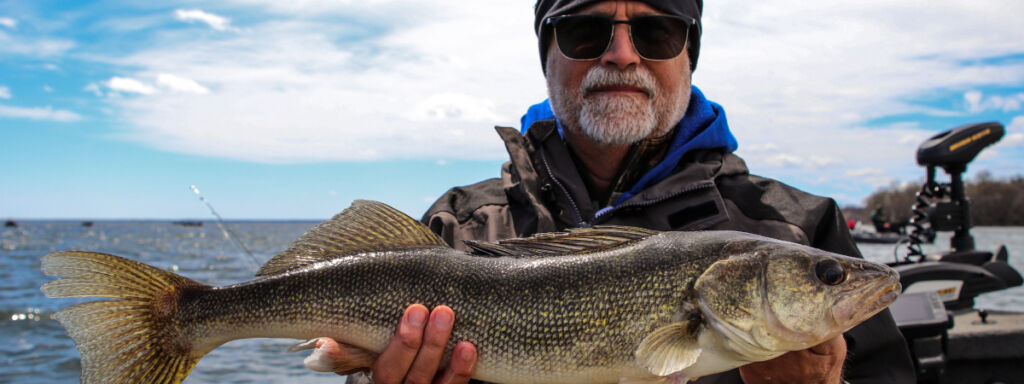
Do keep in mind that there’s a number of ways you can fish walleyes on structure. I like to take note on the electronics of their position, number, and density. Walleyes balled up in tight groups on precise portions of structure call for vertical or near vertical approaches.
Vertically jigging with bait, Jigging Raps, or slip-bobbering these fish would be the order of the day if you’re seeing tight schools of fish.
Fish spread out along the edge of a large sunken island would conversely call for a more mobile approach. You could rig live bait, pull spinners, or even crankbaits to cover more water and put more offerings in front of more fish.
There’s not a wrong way to do it provided you match what you’re seeing on sonar to the techniques you’re using. Some methods are more efficient and productive than others, but that’s the part of the puzzle-solving which makes walleye fishing so rewarding.


